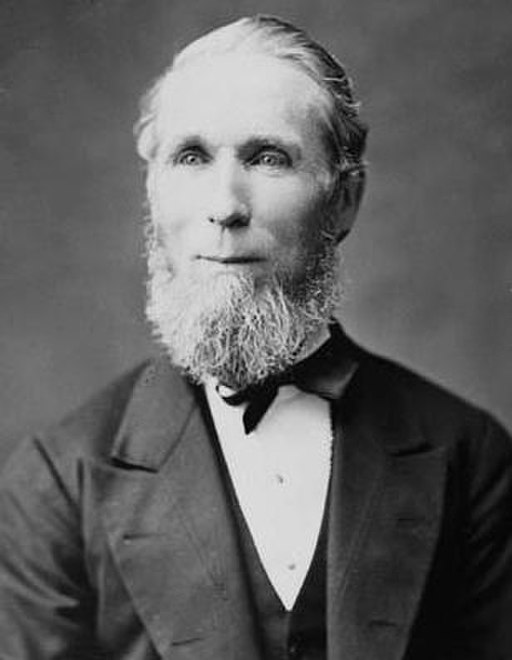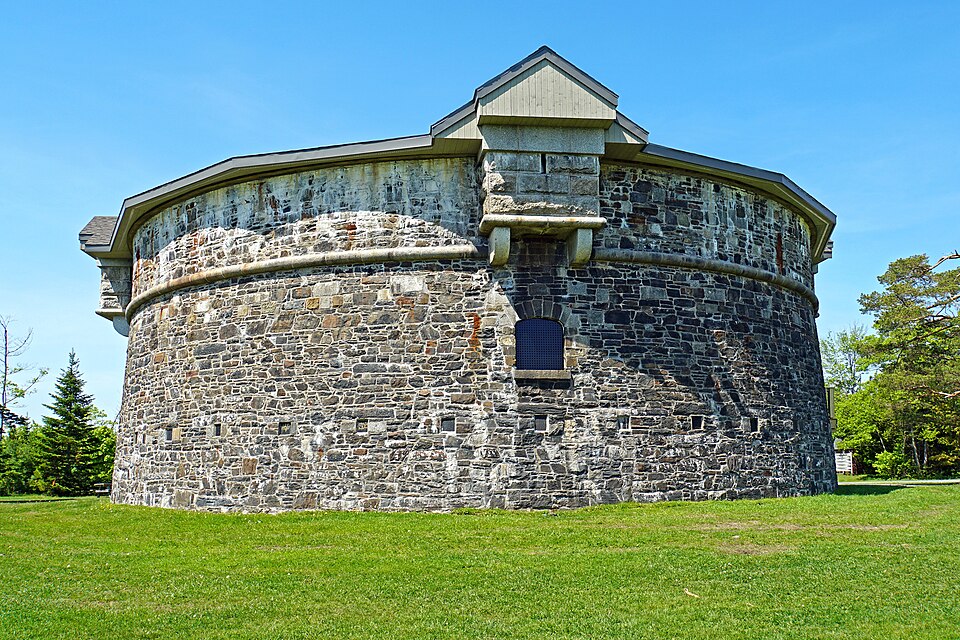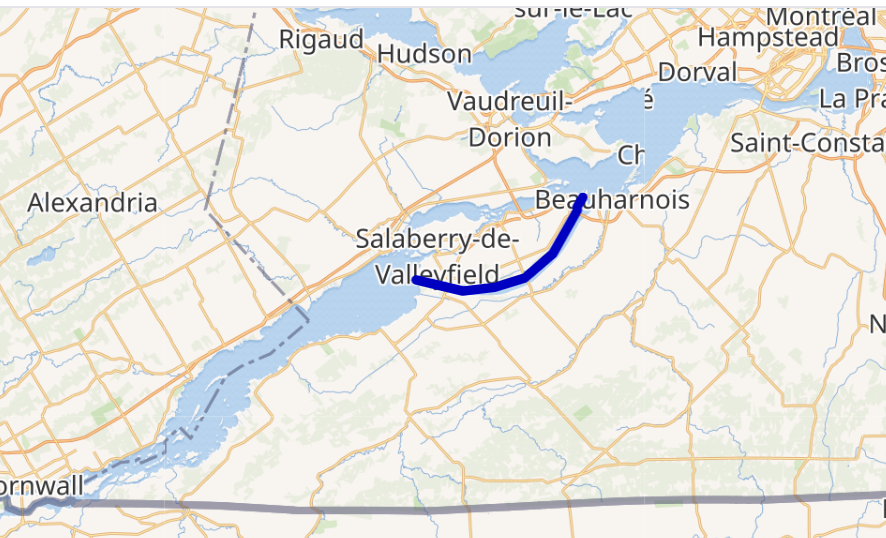Canadian History With New Eyes: The Dark Ages?
The Dark Ages & the French Wars of Religion Some time ago, I started to
Home / Alexander Mackenzie – The First Liberal Prime Minister

Alexander Mackenzie was the 2nd Prime Minister and the first Liberal Prime Minister to lead Canada into nationhood, six years after its birth as a Dominion. He became Prime Minister in 1873, after John A Macdonald fell from grace by accepting bribes in the pursuit of building the Canadian Pacific Railway to link British Columbia to the rest of Canada.
British Columbia, one of Britain’s colonies on the Western shores of Canada, agreed to join the Dominion, ‘IF’ the intercolonial railway, which connected the other colonies (NS, NB, QC, ON, and MB), would be extended west to connect them to the Dominion.
Alexander Mackenzie was born in Perthshire, Scotland, in 1822 and died in Toronto in 1892 when he was 70 years old. He was a Presbyterian but switched his allegiance to the Baptist Church after marrying his wife. He was the third of seven boys. His father died when he was 13, the same year that he began full-time employment. He was apprenticed at age 16 as a stonemason and began working as a journeyman less than four years later.
As an adult, he was a stonemason, businessman, militia officer, journalist, politician, and author. He arrived in Canada as a 20-year-old stonemason in 1842, and his words, ‘with scarcely 16 shillings in my pocket’. His ability to learn new skills quickly and his firm, direct way of handling workers rapidly enhanced his reputation.
His tools were inadequate for the hard limestone in Kingston, where he first settled. He therefore pivoted to building construction and contracting, which landed him a prestigious contract to build a ‘bomb-proof’ arch at Fort Henry. The story is told about his visit to Fort Henry as Prime Minister. He asked the soldier escorting him, ‘Soldier, how thick are these walls?’ To which the soldier replied that he did not know. He said, “I do. It is five feet, ten inches. I know, because I built it myself!”
His Biblical beliefs and standards shaped his life and attitude, giving him strength and comfort, sustaining him in all the vicissitudes and challenges of life. It is said that ‘he was honest and frank to a fault’. While he lived in Kingston, he was very vocal against what he saw as the attitude of entitlement and corruption that existed both in religious and governmental circles. He had a reputation for being hard-working, honest, a man of integrity, and financially responsible.
He left a lasting legacy in Kingston in the form of 4 round stone towers, which were smaller fortifications to protect the colony from possible enemy attacks coming from Lake Ontario and the St. Lawrence Seaway. These towers, called the ‘Martello Towers’, line the shores of Lake Ontario in the Kingston area.

He was also a foreman in the construction of the Welland Canal and the Beauharnois Canal in the St. Lawrence Seaway in Quebec. The Beauharnois canal was built to connect Lake St. Francis to the west (upstream), with Lake Saint-Louis to the northeast (downstream), to bypass the rapids on the Saint Lawrence River. While working at the Beauharnois Canal, unfortunately, a 1-ton rock crushed his leg, and even though he recovered, his leg was never the same.

He moved to Sarnia in 1847, where he established a successful construction company, which allowed him to assist the rest of his family in Scotland to immigrate to Canada. Many factors contributed to his strong commitment to his family’s well-being. Some of these included his religious upbringing, Biblical convictions, family’s misfortune, and his early introduction to the world of work. These shared experiences made his family very important to him.,
In Sarnia, his humble beginnings, his Biblical worldview, and faith in God were visible to the public. He was involved in the influential Temperance Movement and believed in democratic principles.
Alexander Mackenzie left visible, lasting legacies across Southern Ontario through his construction company. These included the Episcopal church and the Bank of Upper Canada in Sarnia, the jail in Chatham, and the courthouse in Windsor. See pictures of some of his legacy buildings here.
He was also known as a housing developer and a supplier of building materials. In 1859, his company was outbid by JR Booth for the construction of the Parliament Buildings.
Before Confederation, the political environment in the Province of Canada was very fractious. This harked back to the Upper and Lower Canada rebellions of 1837/1838. Those two events resulted in the British government recombining the colonies of Upper and Lower Canada into the Province of Canada in 1841.
The separate parliaments of Upper and Lower Canada were abolished and replaced by a single parliament with two houses – the Legislative Council as the upper chamber and the Legislative Assembly as the lower chamber.
From 1841 to 1848, the joint governments fell five times until there was some stability under the leadership of Louis-Hippolyte LaFontaine from Canada East (Quebec) and Robert Baldwin from Canada West (Ontario), that is, until an unpopular Bill was passed to implement compensation for Rebellion losses to Lower Canada. This resulted in the burning down of the Parliament Buildings in Montreal in 1849 by the English living in Montreal.
From 1851, Alexander Mackenzie made his foray into politics when he became the secretary of the Reform Party (forerunner of the Liberal Party) of Lambton County.
There, he convinced George Brown, owner of the Globe, a ‘Reformist newspaper’, to successfully run in the election for the Kent/Lambton seat in the Legislative Assembly. He had campaigned hard for George Brown, thus sealing a lifetime friendship.
By 1852, he became the editor of a local ‘Reformist newspaper’ called The Lambton Shield. It folded when a libel case was brought against him by a Conservative candidate. When the key witness claimed ‘cabinet confidence’, he lost the case. The resulting financial hardship caused the newspaper to fold.
In the 1860s, representatives in the Legislative Assembly from Upper Canada/Canada West comprised two factions: the Reformers (also called Clear Grits or Liberals) led by George Brown and Alexander Mackenzie, and the Liberal-Conservatives led by John A Macdonald. Representatives in the Legislative Assembly from Lower Canada/ Canada East, was led by Georges- Etienne Cartier.
The Reformers, which became the Liberal Party, was founded largely by Christians (like Mackenzie and George Brown, the leader) who decried political corruption by the Liberal-Conservative Party of the Province of Canada, and wanted to see political reform.
In 1861, Mackenzie encouraged his brother, Hope, to run for a seat in the Legislative Assembly, which he declined. Mackenzie was then encouraged to run so he could join and support his friend, George Brown, in the Assembly. He was successful in gaining his first seat in the Legislative Assembly in 1862 (age 40).
In 1864, an event called ‘The Great Coalition’ took place.
Canada East (Quebec) and Canada West (Ontario) decided to approach the other colonies of NS, NB, and PEI to work together to form a ‘Confederation’ of the colonies.
A new political entity was needed to negotiate with the other colonies to work out the terms of reference for uniting as one nation. George Brown resigned from the council over the issue of Reciprocity negotiations with the United States. Mackenzie replaced George Brown at that time.
After Confederation, Alexander Makenzie was elected to the House of Commons to represent Lambton County, in which Sarnia was located. George Brown did not win a seat in the first elections, and there was the national Liberal Party was not a cohesive unit yet.
Since no leader emerged, Mackenzie became, by default, the Leader of the Official Opposition in the House of Commons. A few months before the Macdonald government fell because of the Pacific Rail Scandal, Mackenzie was chosen as the Liberal Party Leader.
In 1873, he became the first Liberal Prime Minister when Sir John A Macdonald of the Conservative Party resigned. He had been exposed for accepting bribes from the railway magnate, Hugh Allen, via a donation to the Conservative Party. BC had agreed to join Confederation if the existing interprovincial railway extended West so they could have access to the rest of Canada. When the bribe was discovered, the government of John A Macdonald fell.
The Governor General, Lord Dufferin, asked Mackenzie to form the government. He agreed and asked the Governor General to call an election in 1874. The Liberals were endorsed by the population when they won a landslide victory with 40% of the popular votes.
At first blush, Lord Dufferin had his reservations and misgivings with the thought that a mere stonemason was taking over the government. However, his opinions changed upon actually meeting this fine upright, honest man. He said, ‘However narrow and inexperienced Mackenzie may be, I imagine he is a thoroughly upright, well-principled, and well-meaning man’.
There is so much more to the lasting legacy Alexander Mackenzie left behind. currently, we live in the shade of the governmental foundations and seeds of democracy he planted.
In Part 2, we examine the political legacies left by the man referred to in his first biography in 1892 as “Canada’s Stainless Statesman” and read the worldwide tributes that poured into Canada because of his character and integrity.
You can listen to the podcast here.
Author’s Note: Lynette is the owner of ChristianRoots Canada. Blogger. Publisher. Course Creator. Passionate about Canadian History from the perspective of God’s Providence.
The Dark Ages & the French Wars of Religion Some time ago, I started to
In many places, like legislatures and schools, the Bible is considered ‘hate literature’. Counseling someone
Britain’s claim of Rupert’s Land by the Doctrine of Discovery, proved to be one of
Dominion Day had been a federal holiday that celebrated the enactment of The British North American Act which united four of Britain’s colonies – Nova Scotia, New Brunswick, Upper and Lower Canada (which became Ontario and Quebec), into a single country within the British Empire, and named that country The Dominion of Canada.